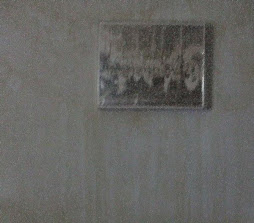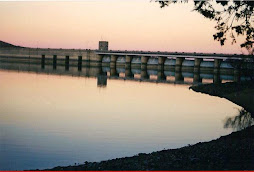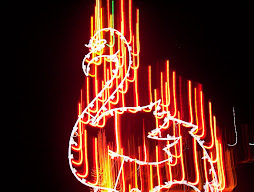Fukushima 50 criticise Japanese government over inconsistent documentation of their radiation exposure
Tokyo, Apr 23 : The Fukushima 50 emergency nuclear plant workers trying to control the situation in the earthquake-cum-tsunami hit plant in Japan, have reportedly accused the government of inconsistent handling of data in relation to radiation exposure.
The Fukushima Daiichi nuclear plant workers have said that they have been risking their health, while attempting to regain control over the facility that was severely damaged by the March 11 tsunami.
..
The paper quoted another nuclear industry source as saying that: "If the radiation data is handled vaguely, workers may not be able to have proof of their exposure to radiation if they need to fight court battles."
Fukushima operator allowed excessive pressure: report
WASHINGTON, USA - The operator of Japan's nuclear plant let pressure in one reactor climb far beyond the level the facility was designed to withstand, which may have worsened the nuclear accident, The Wall Street Journal reported late Friday.
Citing results of its own inquiry, the newspaper said that Japanese rules call for waiting much longer venting the potentially dangerous steam that builds up as reactors overheat.
Following the quake, the pressure inside the vessel that forms a protective bulb around the reactor's core reached twice the level it was designed to withstand, the Journal said.
Then it took 12 hours later to vent the steam, and then, one hour later, the reactor blew up.
Sea leaks would be rated Level 5 or 6
If estimates of leaks of radioactive material into the sea from Tokyo Electric Power Co.'s stricken Fukushima No. 1 nuclear power plant were judged according to the International Nuclear Event Scale, the severity of marine contamination would be rated Level 5 or 6.
The Three Mile Island nuclear accident in the United States was rated Level 5 on the scale introduced by the International Atomic Energy Agency that runs from zero to seven and is based on radiation leaks into the atmosphere.
The radiation leaks into the sea have caused serious contamination of the marine environment, TEPCO's estimates show. Water that leaked into the Pacific Ocean from the No. 2 reactor's water intake contained an estimated 4,700 terabecquerels of radioactive substances, TEPCO announced Thursday.
Reactor 1 water level concerns Via Rense. Excerpts:
The Japanese government has expressed concern about the structural strength of the Fukushima Dai-ichi nuclear power plant's Number 1 reactor. It says the ongoing water injections may be making the vessel less earthquake resistant.
Tokyo Electric Power Company, or TEPCO, is planning to fill part of the containment vessel with water to cool the reactor.
..
TEPCO says the water accumulation will not compromise the structure. But the Nuclear and Industrial Safety Agency says large amounts of water can make the building less earthquake-proof.
After 5 Halflives, I-131 Higher than Cs-134/137 Suggests Ongoing Criticalities
Summary
During full-power operation, numerous "fission products" are in approximate steady-state equilibrium, meaning roughly equal becquerel of I-131 and Cs-134, with a slow buildup of Cs-137. But they all cease to be created when the reactors are scrammed. Japanese regulators NISA and MEXT seem oblivious of the mysterious fact that I-131 Bq "reactor density" is still often reported double the Cs-134/137 Bq. The TEPCO data suggest that fission is ongoing despite the reactor shutdowns. This is bad news.
And:
The fact that nobody in Japan seems to know basics of reactor accident progression that I learned at Sandia Labs in early 1980s is truly scary, because it suggests they are playing with these broken/leaking reactors and SNF pools inside at least three buildings totally destroyed by steam explosions ... as if the reactors and their SNF pools are broken toys that they're using trial and error to try fixing.
Tokyo, Apr 23 : The Fukushima 50 emergency nuclear plant workers trying to control the situation in the earthquake-cum-tsunami hit plant in Japan, have reportedly accused the government of inconsistent handling of data in relation to radiation exposure.
The Fukushima Daiichi nuclear plant workers have said that they have been risking their health, while attempting to regain control over the facility that was severely damaged by the March 11 tsunami.
..
The paper quoted another nuclear industry source as saying that: "If the radiation data is handled vaguely, workers may not be able to have proof of their exposure to radiation if they need to fight court battles."
Fukushima operator allowed excessive pressure: report
WASHINGTON, USA - The operator of Japan's nuclear plant let pressure in one reactor climb far beyond the level the facility was designed to withstand, which may have worsened the nuclear accident, The Wall Street Journal reported late Friday.
Citing results of its own inquiry, the newspaper said that Japanese rules call for waiting much longer venting the potentially dangerous steam that builds up as reactors overheat.
Following the quake, the pressure inside the vessel that forms a protective bulb around the reactor's core reached twice the level it was designed to withstand, the Journal said.
Then it took 12 hours later to vent the steam, and then, one hour later, the reactor blew up.
Sea leaks would be rated Level 5 or 6
If estimates of leaks of radioactive material into the sea from Tokyo Electric Power Co.'s stricken Fukushima No. 1 nuclear power plant were judged according to the International Nuclear Event Scale, the severity of marine contamination would be rated Level 5 or 6.
The Three Mile Island nuclear accident in the United States was rated Level 5 on the scale introduced by the International Atomic Energy Agency that runs from zero to seven and is based on radiation leaks into the atmosphere.
The radiation leaks into the sea have caused serious contamination of the marine environment, TEPCO's estimates show. Water that leaked into the Pacific Ocean from the No. 2 reactor's water intake contained an estimated 4,700 terabecquerels of radioactive substances, TEPCO announced Thursday.
Reactor 1 water level concerns Via Rense. Excerpts:
The Japanese government has expressed concern about the structural strength of the Fukushima Dai-ichi nuclear power plant's Number 1 reactor. It says the ongoing water injections may be making the vessel less earthquake resistant.
Tokyo Electric Power Company, or TEPCO, is planning to fill part of the containment vessel with water to cool the reactor.
..
TEPCO says the water accumulation will not compromise the structure. But the Nuclear and Industrial Safety Agency says large amounts of water can make the building less earthquake-proof.
After 5 Halflives, I-131 Higher than Cs-134/137 Suggests Ongoing Criticalities
Summary
During full-power operation, numerous "fission products" are in approximate steady-state equilibrium, meaning roughly equal becquerel of I-131 and Cs-134, with a slow buildup of Cs-137. But they all cease to be created when the reactors are scrammed. Japanese regulators NISA and MEXT seem oblivious of the mysterious fact that I-131 Bq "reactor density" is still often reported double the Cs-134/137 Bq. The TEPCO data suggest that fission is ongoing despite the reactor shutdowns. This is bad news.
And:
The fact that nobody in Japan seems to know basics of reactor accident progression that I learned at Sandia Labs in early 1980s is truly scary, because it suggests they are playing with these broken/leaking reactors and SNF pools inside at least three buildings totally destroyed by steam explosions ... as if the reactors and their SNF pools are broken toys that they're using trial and error to try fixing.









































































































No comments:
Post a Comment